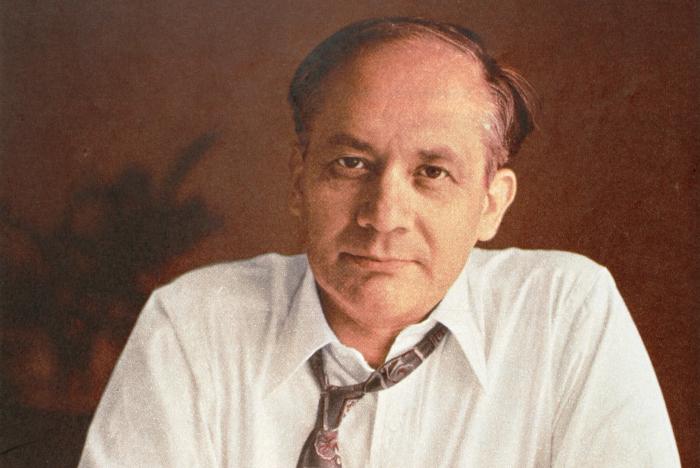
At a quiet New York cemetery in 1959, a handful of people stand around a fresh grave as a casket is lowered. Any passerby seeing the small somber ceremony might assume that the body belonged to a person of little significance. In fact, this casket carries the body of a man who is responsible for one of the largest shifts in international law in human history. Without his efforts, it is likely that the gravest crime mankind has ever committed and continues to commit would still be a crime without a name.
By the end of World War II, the Nazi regime had orchestrated the murder of over 17 million civilians in concentration camps throughout Europe. 1 Despite these egregious atrocities, no one at the time referred to the Holocaust as an act of genocide, not because it was not an appropriate descriptor, but because Raphael Lemkin had not yet coined the word and defined the crime for the world. The outcome of his personal crusade to encode ‘Genocide’ in an internationally recognized and binding Convention to which the US would sign on became his legacy (the US signed on decades after his passing).
Lemkin was born to a Polish-Jewish family in 1900 in a small village called Bezwodne in what was then The Russian Empire. Home schooled by his mother, he proved to be a brilliant scholar. By the time he received his undergraduate degree from Jan Kazimierz University he had learned over 14 languages and showed strong aptitude and interest in international law. After a career as a prosecutor in Poland, he was forced to flee to Sweden to evade capture by the Nazi forces in 1939. However 49 of his relatives were tortured and/or killed, drops in the ocean of inhumanity that was the Holocaust. 2

After fleeing the Nazi invasion, Lemkin eventually made his way to the United States. There he became a prolific professor, lecturing at the law school at Duke University in 1941 and the School of Military Government at the University of Virginia in 1942. He also served as an adviser to the United States War Department specializing in international law. 3
The world first became aware of Lemkin’s concept of genocide after the publication of what would arguably be his most important work, Axis Rule in Occupied Europe, in 1944. Primarily a legal analysis of the behavior of Nazi Germany in occupied territories during World War 2, the book also contained a full definition of the crime Lemkin dubbed “genocide.” 4 After this publication, Lemkin dedicated the rest of his life to getting the international community to acknowledge genocide as a crime under international law.
Lemkin drafted a resolution for a treaty which would officially ban genocide under international law. He then took his resolution on the road, presenting it to any nation which would hear him, hoping to garner enough support to endorse a convention on the subject. After years of lobbying the international community, The United States UN delegation agreed to present Lemkin’s resolution to the General Assembly. Dubbed “The Convention on the Prevention and Punishment of the Crime of Genocide,” the resolution was adopted on December 9th, 1948. It would be another 3 years before enough countries signed on the the convention to make it enforceable. Much to Lemkin’s dismay, The United States was not one of the first 20 signatories. 5

Lemkin dedicated the rest of his life to lobbying those nations which had not yet signed onto the convention, with the United States being his primary target. He invested every moment of his time and every cent of his modest wealth to landing that particular white whale. He eventually died of a heart attack, impoverished, unemployed, and underappreciated, in 1959. His funeral was a small affair, reportedly only attended by 7 people. 6 Yet, today, the is no Law School, no class that teaches Human Rights, nor any conversation of World War II and any of the subsequent Genocides that does not mention his name. More importantly, the Convention provided some tools to prevent or punish such cases.
The greater legacy of his life’s work would not be realized until several decades after Lemkin’s death. The United States would eventually sign the Genocide Convention, but not until 1988. The international community would eventually convict a man of the crime Lemkin coined, but not until the International Criminal Tribunal for Rwanda in 1998 which found Jean-Paul Akayesu guilty of the Rwandan genocide. Three years after that, Radislav Krstic was similarly convicted for the murder of 8,000 Bosnian Muslims in Yugoslavia. 7 Though he died nearly 40 years too early to see the fruits of his labor truly flourish, we can hope that his soul finds solace in the fact that, thanks to him, these heinous actions have a name and are viewed the world over as being among the worst crimes humanity has ever known. Eradicating the crime of genocide still eludes us but at least accountability is now more widespread around the world. 8
- Donald Niewyk and Francis R. Nicosia, The Columbia Guide to the Holocaust (New York: Columbia University, 2000), 43. ↵
- Raphael Lemkin and Donna-Lee Frieze, Totally Unofficial: The Autobiography of Raphael Lemkin (New Haven: Yale University Press, 2013). ↵
- Robert Bliwise, “The Man Who Criminalized Genocide,” Duke Magazine, November 14, 2013, http://dukemagazine.duke.edu/article/man-who-criminalized-genocide . ↵
- Rafael Lemkin, Axis Rule in Occupied Europe: Laws of Occupation, Analysis of Government, Proposals for Redress, (Washington D.C.: Carnegie Endowment for International Peace, Department of International Law, 1944) pg. 79. ↵
- Raphael Lemkin and Donna-Lee Frieze, Totally Unofficial: The Autobiography of Raphael Lemkin (New Haven: Yale University Press, 2013). ↵
- Jay Winter, “Prophet Without Honors” The Chronicle, June 3, 2013, https://www.chronicle.com/article/Raphael-Lemkin-a-Prophet/139515 . ↵
- Robert Bliwise, “The Man Who Criminalized Genocide,” Duke Magazine, November 14, 2013, http://dukemagazine.duke.edu/article/man-who-criminalized-genocide . ↵
- United Nations, “Convention on the Prevention and Punishment of the Crime of Genocide,” United Nations Treaty Collection, 78:1, 1021 (9 December 1948), New York: United Nations, 1951, 278-311. ↵



196 comments
Illeana Molina
This article is incredibly informational as it speaks on the importance of Raphael Lemkin and his impact on the Crime of genocide and how that term came to be today. Before today I was not educated on his impact on history nor his passion for the international community to acknowledge genocide as a crime under international law. Looking at this from a civic engagement or social action route, he did want to get his community involved as he did lobby for and involve the UN. Interestingly, no Law Schools have implemented a course on Human Rights or courses that speak of World War II. Lemkin is an amazing individual who coined a term of utmost importance, and we have been made aware of his impact. Mathew Wyatt stated, “Eradicating the crime of genocide still eludes us, but at least accountability is now more widespread around the world”
Victoria Dubois
Your introduction caught my attention very quickly allowing me to be engaged throughout the whole article. It is very sad the Lemkin will not be able to see the accomplishment that he did and left in our country. The article was very descriptive and shows us that this man is someone who should have his story heard around the world and not have been buried incognito.
Yaniev Ibarra
This article was a great read! I have prior knowledge of the holocaust and the term genocide is widely used but I was not aware that the holocaust was not considered a genocide sooner. While it is sad to see that Raphael Lemkin did not get to see the international community acknowledge genocide as a crime under international law it is good to know that because of him it has.
Naya Harb
Dr. Lemkin made a real change in our world by encoding the word “genocide”. He realized that something had to change and he made it happen. The sad part was the time it took for the signing of The Convention and the lapse of time to reach ratification. I loved the image posted of him at The Convention on the Prevention and Punishment of the Crime of Genocide. It really displays the development he created in the world to stop such horrific crimes.
Olivia Flores
It is amazing to see the difference one person can make with their lives and not even be present to witness it. Dr Lemkin had a dream and continued to pursue it, even though he came from nothing and often lived with very little. It is heartbreaking to hear how he didn’t have many even there with him in his death, but to know the change he has enacted is just another reason to continue on with my own dream. No matter if you aren’t physically here to see the difference you have created, you will create one. This article was simplistic and informative, and I learned about someone I have never heard of before, but someone that I will continue to teach others about going forward.
Sudura Zakir
Very amazing work in this context highlighting certain topic of World War II, Nazis and genocide. Lemkin’s hardwork brought him in new place where he became professor. He wrote about genocide to make people know about what it means which is really impressive work. His work for banning genocide under international law and it took long time to get signed by different countries and make it work. His amazing work plays significant role in establishing rights and preventing crimes.
Estefania Walther
This article was very intriguing and informative. I wasn’t aware that the word ‘genocide’ hadn’t been around for decades. I really enjoyed learning about Lemkin’s ideas and research. He saw first hand how the war affected him, his family, his country (including genocide) and saw the need for change. He wanted to make something so inhumane and a normal use for extermination or punishment, was allowed and even enforced in a way. I am glad he is finally getting the recognition he deserves and this article was great.
Carlos Alonzo
The title articulates a dreadful tone for coining genocide and relating this topic to one man highlights his significance in the introduction. This is an individual civic engagement struggle to reshape worldwide policy. Raphael Lemkin coined the word “genocide”. He wrote the resolution to ban genocide and pushed this work to the United Nations to sign off on his treaty. Thanks to this man, genocide has been defined and is outlawed widespread around the world and more people should know about him. Lemkin brought his work to political attention pushing for a policy worldwide that outlaws annihilating an entire ethnic group, fantastic article!
Maximillian Morise
The terrible crimes and atrocities committed throughout the Second World War continue to shock the public to this day, and it is very important that Raphael Lemkin put a name to this horrible act of mass slaughter and the systematic purging of hundreds of innocent lives. I applaud Matthew Wyatt for writing this article and showcasing the life of a man who many may not know of, yet who had a significant role in international laws regarding human rights and inhumane acts of terror and war today.
Elias Muniz
Often times we think of civic engagement as a community of people coming together to protest or progress a movement. While these are effective in their own right, it is the smaller contributions that often go unnoticed. The work of Lemkin is a good example of how one individual can have a great impact not just in their community, but in the world. With the publication of “Axis Rule in Occupied Europe” Lemkin brought forth a new way of looking at what the Nazis had committed. In doing so, the world community was better able to punish those who would commit several acts. Lemkin died with out ever seeing his work be used in the world stage, it was not until after that the word “genocide” became what it is today. This goes to show that engagement and progress towards a better world can take years until effects are fully seen, nevertheless, Lemkins works has revolutionized the way in which criminal acts can be seen.